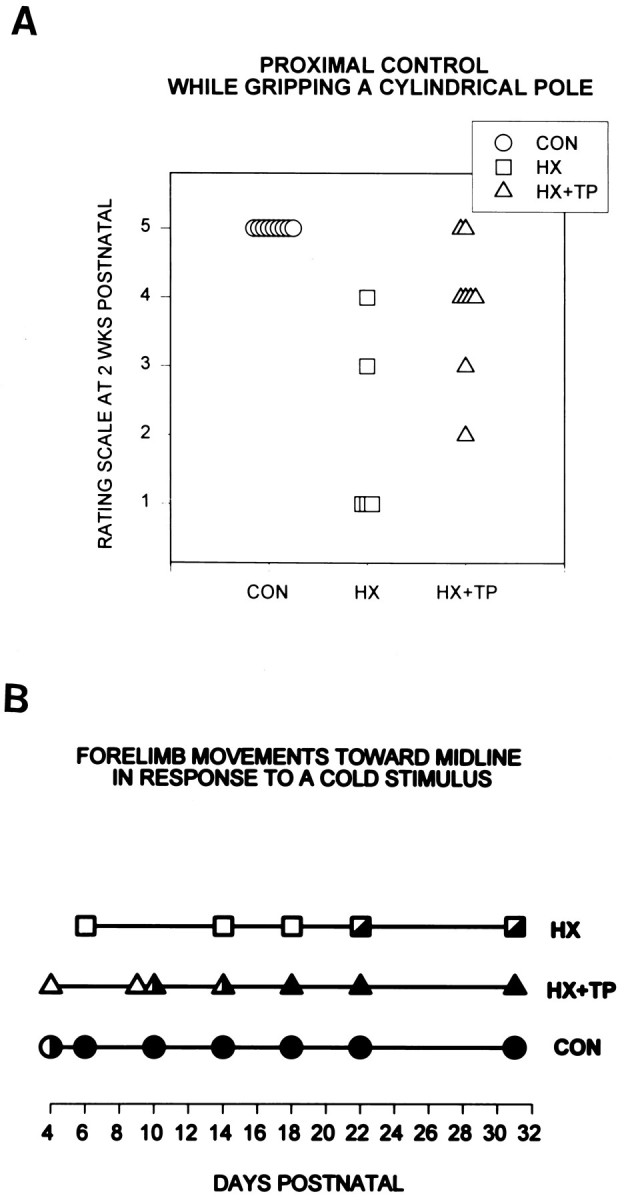Fig. 5.

Effect of neonatal cervical spinal cord injury on the development of proximal control during static grasping and dynamic forelimb use. A, Proximal control for achieving and maintaining a chin-up at 2 weeks postnatal. Rating scores range from 1 to 5: 1 indicates the most immature and aberrant response, 5 represents maturation of the response, and the intermediate scores represent progressive development of skills for this task. Eachsymbol represents an individual animal in the specified group. CON rats use proximal muscle control to achieve and maintain a chin-up. HX rats never maintain a chin-up and instead achieve various intermediate levels of control, often using their obligatory right grasp reflex to sustain their grip. Mostly, when HX rats attempt to support their body weight, they excessively flex their pelvis, swinging their hindlimbs up onto the pole. Even with this excessive effort, they do not maintain their grasp and soon drop to the surface (rating scale = 1). Although the HX + TP rats initially drop to the surface, unlike the HX rats they eventually develop the motor components for the mature response. Most HX + TP rats use both forelimbs to hold onto the pole and use proximal control to achieve a chin-up (rating scale = 4), although others use varying degrees of normal behavior. B, Forelimb use to groom the face. Eachsymbol represents the typical response of the animals in the specified group. Filled symbols indicate mature behavior. Open symbols indicate immature behavior.Partially filled symbols indicate emerging mature behaviors. Unlike CON rats (n = 9), HX rats (n = 6) never develop mature use of the forelimbs for grooming. Immature responses (e.g., backing away from a noxious stimulus) are used initially, and later emerging mature behaviors (e.g., only the left forelimb bats at the stimulus) develop in HX rats. Although HX + TP rats (n = 8) demonstrate a prolonged period during which they exhibit immature behaviors, they all develop the motor skills required for maturation of the grooming response.
